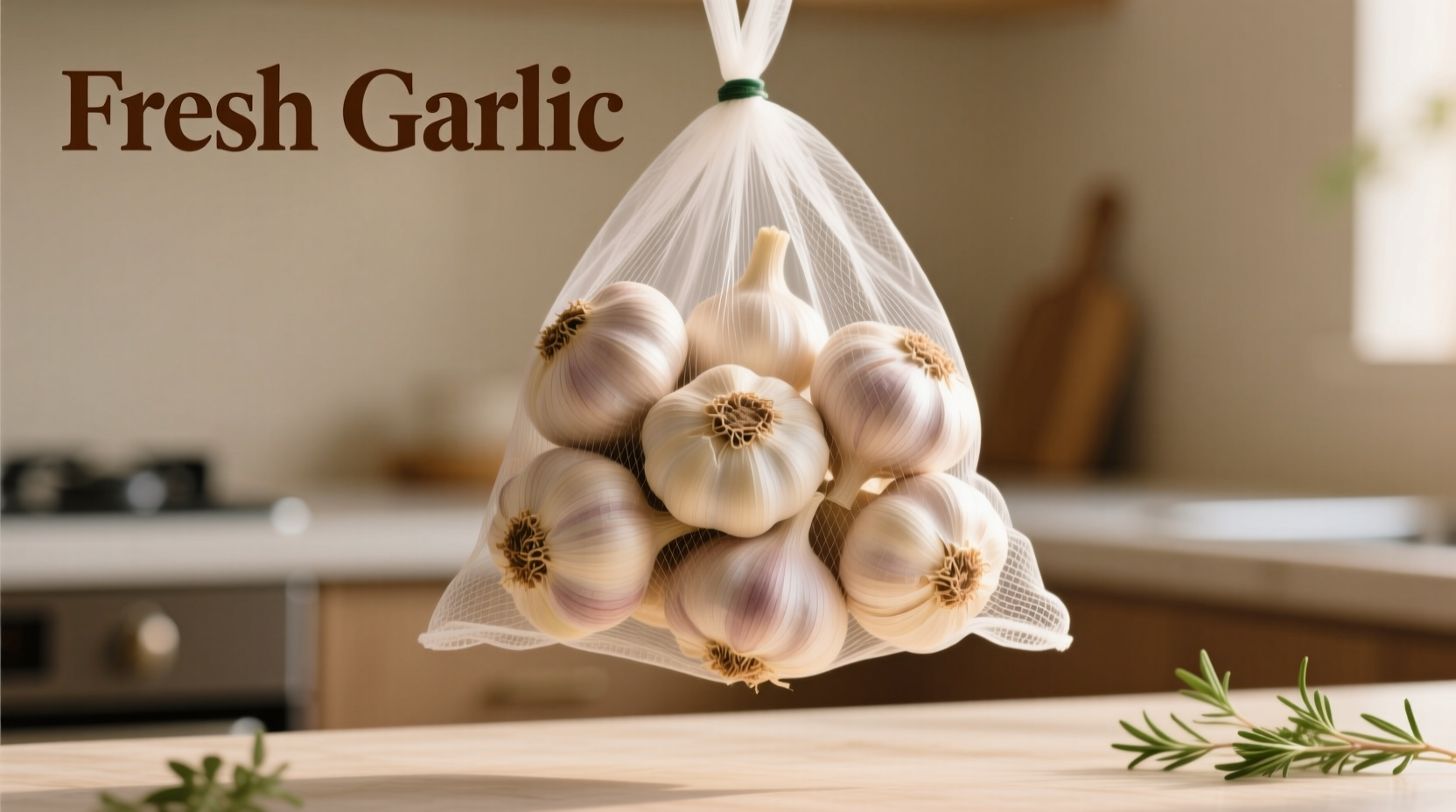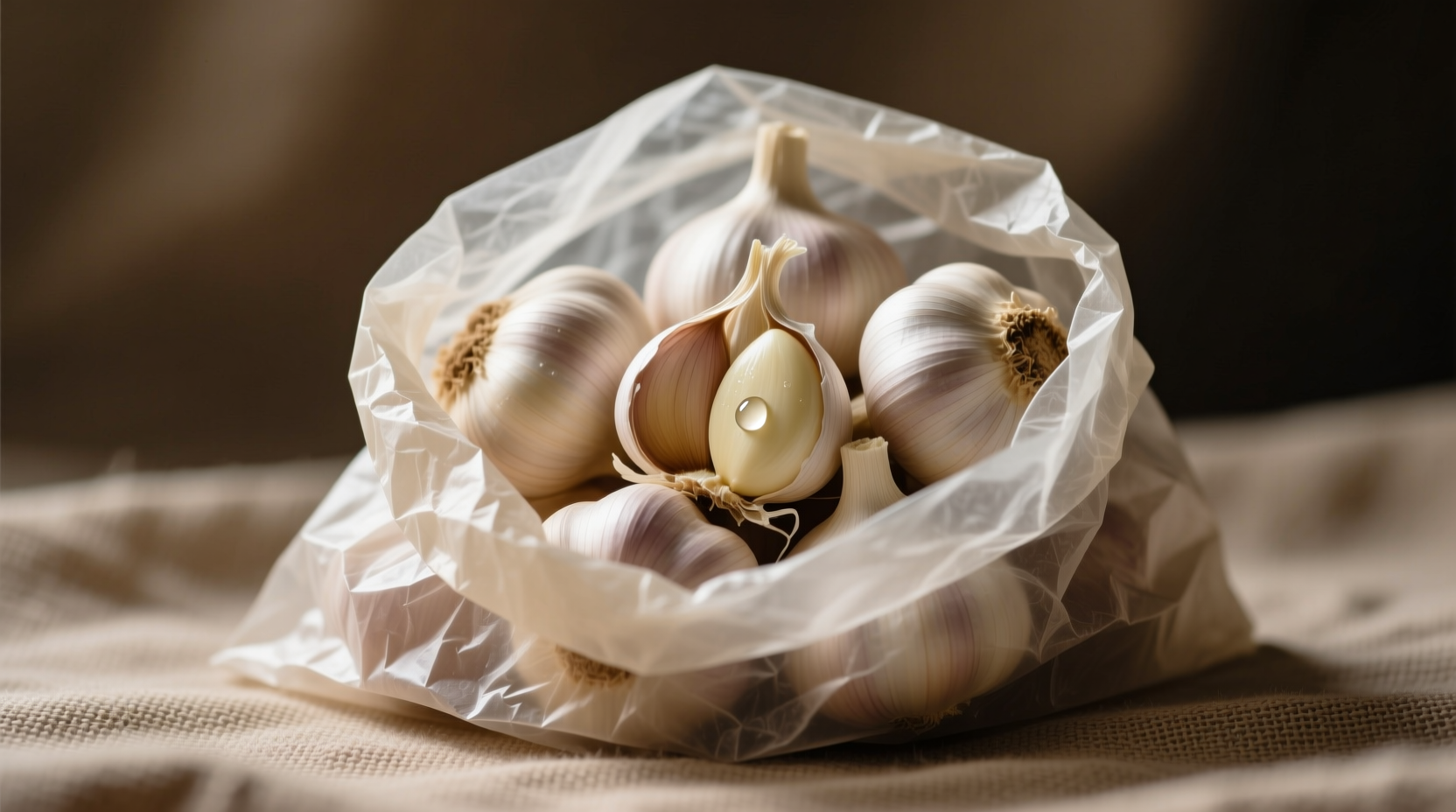Discover how this humble kitchen tool transforms your garlic storage game and keeps your cloves fresh, flavorful, and ready for culinary adventures. Whether you're a home cook or professional chef, understanding proper garlic preservation saves money, reduces food waste, and ensures peak flavor in every dish.
What Exactly Is a Garlic Bag and Why It Matters
A garlic bag isn't just another kitchen gadget—it's a scientifically backed solution to one of cooking's most common frustrations: garlic that sprouts, molds, or dries out too quickly. These specialized mesh containers, typically made from breathable materials like cotton, linen, or synthetic netting, create the perfect microenvironment for garlic preservation.
Unlike plastic containers or sealed bags that trap moisture and accelerate spoilage, garlic bags facilitate continuous air circulation around each bulb. This simple design principle aligns with food science research from agricultural experts at institutions like the Oregon State University Extension Service, which confirms that proper ventilation is critical for extending the shelf life of alliums.

The Science Behind Garlic Preservation
Understanding why garlic bags work requires examining garlic's biological behavior. When stored in conditions with poor airflow and high humidity, garlic naturally responds by either sprouting (when conditions mimic spring) or developing mold (when moisture accumulates). The USDA's Food Safety and Inspection Service identifies proper ventilation as essential for preventing microbial growth in stored produce.
Garlic bags address three critical preservation factors:
- Airflow management: Mesh construction allows 360-degree circulation, preventing moisture pockets
- Humidity control: Breathable materials wick away excess moisture while maintaining ideal 60-70% humidity
- Temperature regulation: Natural fibers help buffer against minor temperature fluctuations
Storage Method Comparison: What Works Best
| Storage Method | Shelf Life | Sprouting Risk | Mold Risk | Flavor Preservation |
|---|---|---|---|---|
| Mesh garlic bag | 3-6 months | Low | Very Low | Excellent |
| Ceramic garlic keeper | 2-4 months | Moderate | Low | Good |
| Refrigerator (plastic bag) | 1-2 months | High | Very High | Poor |
| Pantry (loose) | 3-4 weeks | High | Moderate | Fair |
Step-by-Step: Maximizing Your Garlic Bag's Effectiveness
Simply placing garlic in a mesh bag isn't enough—you need proper technique to achieve optimal results. Follow these professional chef-recommended steps:
- Preparation: Gently brush off excess dirt without washing (moisture accelerates spoilage)
- Inspection: Remove any cloves showing early signs of softness or discoloration
- Placement: Position the bag in a cool, dark location with consistent temperature (60-65°F/15-18°C ideal)
- Airflow check: Ensure nothing blocks the bag's sides—hang it or place on a wire rack
- Monitoring: Check weekly for any compromised cloves that need removal
When Garlic Bags Aren't the Best Solution
While highly effective for whole bulbs, garlic bags have specific limitations you should understand. According to food preservation guidelines from the National Center for Home Food Preservation, these situations require alternative approaches:
- Individual cloves: Once separated from the bulb, cloves lose protective layers—store in airtight containers
- Peeled garlic: Requires refrigeration in oil or vinegar for safety
- High-humidity environments: In tropical climates, consider adding silica gel packets near (not in) the bag
- Long-term storage: For periods exceeding six months, freezing or dehydrating becomes more effective
Creative Alternatives When You Don't Have a Garlic Bag
Don't have a dedicated garlic bag? Several household items work nearly as well. The key is maintaining that crucial airflow while protecting from light. Try these proven alternatives:
- Repurposed produce bags: Onion or citrus mesh bags function identically to purpose-made garlic bags
- DIY linen sack: A simple drawstring pouch made from breathable fabric provides excellent ventilation
- Wire basket with cloth liner: Creates airflow while catching loose skins and debris
- Hanging braid: Traditional method that combines storage with kitchen decor (ensure good air circulation around each bulb)
Avoid These Common Garlic Storage Mistakes
Even with a garlic bag, these frequent errors compromise your garlic's quality and shelf life:
- Refrigeration: Cold temperatures trigger sprouting in whole bulbs—reserve fridge storage for peeled cloves only
- Overcrowding: Packing too many bulbs restricts airflow—leave space between each head
- Proximity to heat sources: Storing near stoves or ovens creates microclimates that accelerate spoilage
- Ignoring early warning signs: One sprouting bulb can trigger others—remove compromised cloves immediately
Extending Garlic's Culinary Life Cycle
When your garlic begins showing signs of aging but remains safe to eat, don't discard it—transform it. Slightly sprouted garlic develops a milder flavor profile perfect for:
- Infused oils (with proper refrigeration)
- Roasting to bring out natural sweetness
- Adding to soups and stews where stronger flavor isn't critical
- Creating garlic salt by dehydrating and grinding
Remember that garlic's flavor compounds change as it ages—understanding these transitions helps you maximize each bulb's culinary potential throughout its entire life cycle.











 浙公网安备
33010002000092号
浙公网安备
33010002000092号 浙B2-20120091-4
浙B2-20120091-4